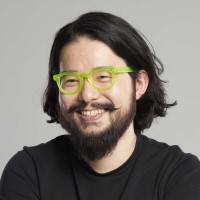
SHENG-HUNG LEE
Designer and Engineer at MIT & IDSA Boston Vice Chair
Sheng-Hung Lee is a designer, maker and educator inspired by multiple domains of knowledge and perspectives, thriving on creating new value for clients in multi-disciplinary teams. Trained as an industrial designer and electrical engineer, Lee works for prestigious design consultancies. His approach to problem solving is influenced by his passion for how design and technology are integrated into—and impact—society.
Lee worked with clients including Bank of China, EF (English First) and Rubbermaid to redesign their services and user experiences. He also worked as a researcher at the National Science Council in Taiwan and is a member of the Taiwan Society of Technology and Sociology, IDSA, Phi Tau Phi Scholastic Honor Society and China Technical Consultants, Inc.
Lee holds a double bachelor’s degree with honors in industrial design and electrical engineering from National Cheng Kung University in Taiwan. His work, including the latest, TetraPOT—a natural, green and sustainable sea defense system—won IDA Gold in Design for Society; IDSA International Design Excellence Award 2016 Gold in Environments; European Product Design Award 2017 Gold in Design for Society/Design for Sustainability; Braun Prize; Core77 Design Award; Red Dot Award (Best of the Best); iF Design Award Gold, Spark Design Award and James Dyson Award.
The adjunct associate professor of product at Fudan University Shanghai Institute of Visual Art is also a student in computer science, taking regular online courses and creating apps.
What did you most enjoy about the IDA judging process?
I feel that IDA views the judging process as a user experience design project. I enjoy the most during the IDA judging process is that it gave judges an accessible and user-friendly interface/platform to view all the design works, including videos, posters, and explanation text.
What did you think about the quality of the entries in the IDA?
I view the quality of design in three aspects: desirability, feasibility, and viability. Among all three evaluation aspects, I believe that users’ desirability is the most critical one since desirability answers the question of WHY of the design brief; feasibility responses to the question of HOW of the project; viability echoes the question of WHAT of the design challenge. Normally great quality of human-centered works originate from people’s pain points, user behavior, life experience, and motivation.
How did you feel about the quality of the students’ entries?
I think for the student participants, it would be important to show the whole creative process such as how do they conduct research? What are the users’ pain points? How to do quick prototyping to validate design concepts? What is the positive social impact that is made by the design? Since I view the students’ entries are more towards process-oriented projects rather than result-oriented portfolios.
After reviewing the IDA projects, did you see evidence of current trends or challenges in the design industry?
I would say that designers are in the era of tackling systemic social design challenges. The role of the designer has already shifted from a problem solver to a culture shaper. Great IDA projects the judges reviewed did not only provide the single design solution, but also consider a series of potential possibilities in the context of transformation/change as well as re-thinking about the role of the designer in the lens of the soft/human side of design skills such as shaping organization culture, leadership building, and social-related issues.
How much influence does your own personal taste influence your decisions in judging a design award?
To some degree, the personal taste definitely would influence the decision-making process. I am integrating the rating result based on my objective and a subjective aspect. Making a decision on the objective side is great and sounds fair, but the subjective side is cultivated through personal work and life experience, different layers of the learning stage, and taste toward design.
What advice would you give to future entrants?
It’s critical to ask the right question before heading to the design space directly. Are we solving the right questions? Do we have the proper design brief? Is the question worth solving by design? In a typical design project, designers should conduct a series of user research with/without clients to clearly identify their pain points before reframing the design challenges. In that way, design can play as a meaningful communication role as well as a problem-solving tool to make not only a difference but also an invaluable impact.
What did you learn from this experience, and is there anything that you learned that you will take back to your respective business?
As judge, I am also learning and benefiting from all participants’ great and diverse design works. What influence me the most is actually the diverse angles to view the same design challenge within the category.
What are you working on, what is in the pipeline for you for 2021?
I am currently working on establishing a system design club – Planet D at MIT integrating my design philosophy, creative process, and culture with a group of design talents to create and cultivate a transparent, sustainable, and meaningful educational organization at MIT. I view the project as a socially impactful piece of work that hopefully will stay and grow generations after generations.
What do you think are the biggest challenges and opportunities in your career/industry now?
I think the biggest challenge nowadays in the design industry now is that people are starting to view the design at a strategic level, which is great to see the transformation from viewing design as a toolset to design as a mindset. But it also triggers opportunities for design education that what should we teach to our designers for our future generation beyond just to be a problem solver.